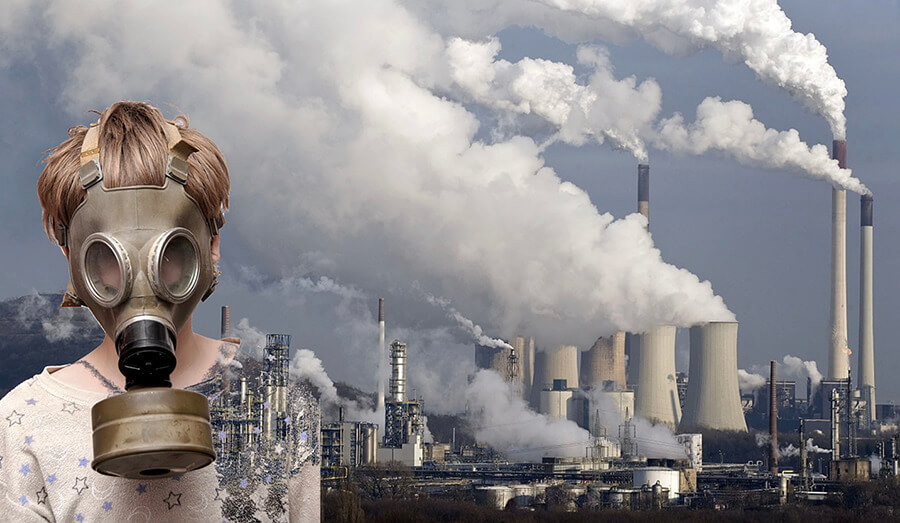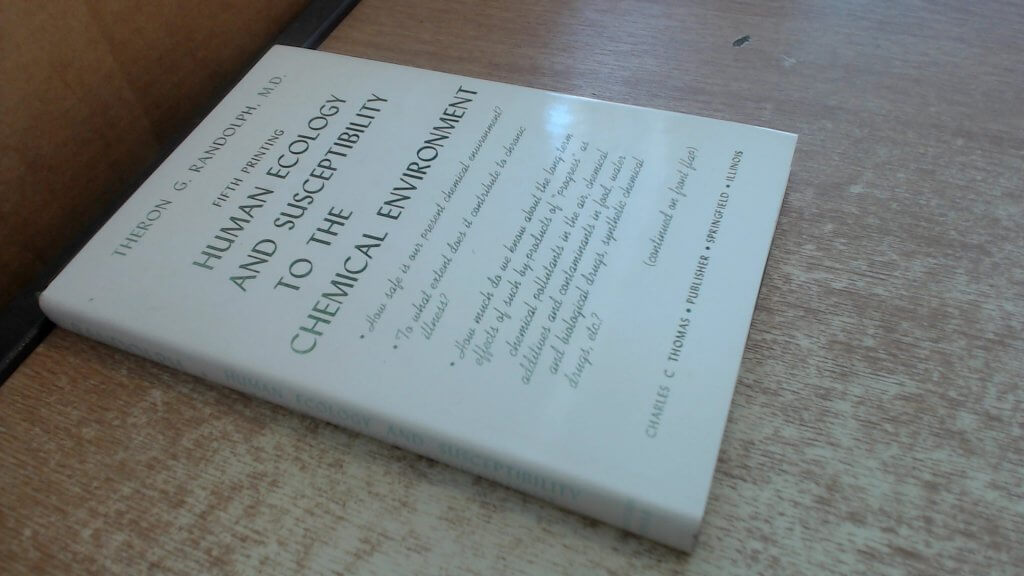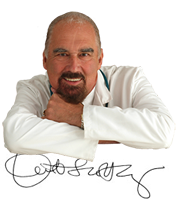Toxicology is one area of medicine about which properly knowledgeable holistic doctors (clinical ecologists) are not in conflict with their more conventional colleagues. We share the same issues, pursue the same phenomena and agree on therapeutic approaches. Toxicologists tend to veer in the direction of epidemiological effects, studying whole-groups, whereas the clinical ecologist takes it more patient by patient, but that’s the only real difference.
Toxicology has been around a surprisingly long time. Primitive peoples used natural poisons for hunting. Indeed the word toxicology comes from the Greek word toxicos, the bow from which poison arrows were flung.
The ancient Greeks and Romans made a special study of poisons, although more in connection with political assassinations than the pursuit of science!
The Persian King Mithridates was so afraid of being poisoned that he took a regular cocktail of known poisons to accustom his body to their effect so that they would no longer work on him. From his name we get the word mithridate.
The prolific use of poisons for getting rid of ‘inconvenient’ people led to a treatise by Maimmonides (1135-1204) entitled Poisons and their Antidotes. It summarized all knowledge of poisons at that time.
The Italian fifteenth-century Borgia family were infamous poisoners. Lucrezia’s name, in particular, achieved evil notoriety for her nefarious use of chemicals to ‘alter’ history, though it is possible her exploits were exaggerated by her enemies.
Toxicology finally adopted a more formal scientific footing, and today we are concerned almost entirely with environmental hazards and unintentional harm done to human beings. Millions of man-made chemicals have been described in scientific literature since the late 19th century. Production continues apace: something like 6,000 new chemicals are added to the list every week and at least 70,000 are currently in production. Only a fraction of this toxic load has been adequately tested for the long-term effects on human health.
We meet chemicals in the air, our food, water supplies and by direct contact. Medical drugs add their share, and even the clothes we wear and the fabric of our homes are mostly artificially made, needing many complex chemical precursors which linger on the final product. Some of these fabrics emit toxins long after being installed in the home. It is a fact of life in the modern world that indoor pollution can be just as bad, or worse, than the outdoor kind.
The cumulative effect of all these substances may create a total body burden that triggers chemical sensitivity in certain individuals. In my 1986 book ALLERGIES; WHAT EVERYONE SHOULD KNOW I introduced the term ‘human canaries’ to describe such people – they are a warning to us all that we are going to be ill if we continue as we are, in much the same manner that canaries used to warn miners of impending gas danger. Unfortunately, no one seems to be heeding these canaries.

Most studies done on humans to date have been concerned predominantly with acute massive exposures suffered by workers in industrial settings, such as the Bhopal disaster in 1984. But clinical ecologists gathering 10,000s of case studies showing that chronic exposure to levels commonly thought to be ‘safe’ are compromising people’s health and may turn out to be a more important hazard in the long term.
Multifactorial Effects
The effects of chemical exposure are dependent upon a number of factors, principally:
The resulting problems can be complex, depending on the target organs involved (which organs are affected most). Misdiagnosis and missed diagnosis are the norm. Safety levels are misleading, since they are based on averages. Some individuals will react to far lower levels than would affect the majority.
The way the body disposes of unwanted artificial and toxic compounds (xenobiotics) we call detoxification. In fact, the metabolic pathways by which substances are changed chemically and removed from the body, don’t always result in a less poisonous end-product. It could be worse! A better term, therefore, is biotransformation.
There are several pathways involved. The subject is a vast and burgeoning one; the information given here is just a brief overview for the layman.
Phase I and Phase II Detoxification
To get rid of a toxin effectively it is most important that the body turns it into something soluble in water. At that point the substance or its metabolites (breakdown products) can be removed via the kidneys, sweat, bile and other fluids. There are two principal routes by which the body does this. In Phase I metabolism the molecule is altered to become water soluble by enzymes in a variety of ways, each stage of which is assisted by a specific enzyme. These enzymes are found in the microsomes of most cells.
The most important of these enzyme pathways is the cytochrome P450 system, also called the multi-function oxidase system (MFO). Under its influence oxygen is added to the toxic molecule, converting a hydrogen atom in the molecule into a hydroxyl group (hydrogen and oxygen). The opposite effect, known as reduction, means that hydrogen is added. Both effects can knock out the toxicity of a molecule.
Two other methods to note are: 1) adding a water molecule, called hydration and 2) knocking out halogen atoms, such as chlorine, called dehalogenation.
It is important to note that magnesium is essential for Phase I actions, as is a complex co-enzyme called nicotinamide adenine dinucleotide (NADH), a derivative of vitamin B3. That’s one of the reasons why magnesium and B vitamins are such important supplements for us.
Vitamin C and zinc are also said to help, and possibly other nutrients as well. This is why vitamin and mineral supplements can be so vital for allergics and poor metabolizers.
Phase II detoxification is carried out differently. Here extra groups are stuck on to the basic molecule. These change its character and render it harmless and more soluble. We call this process conjugation. An example is sulphation, the addition of a sulphate group (-SO3). Phenol (carbolic acid) combines with the sulphate group to make phenyl sulphate, and an enzyme called phenol sulphonyl transferase may have great importance for food intolerance since it has become clear that a number of foods contain complex phenolic compounds.
Side Routes
These helpful biotransformation pathways can be blocked for a number of reasons. Certain vitamin and mineral deficiencies could do it; magnesium, for example, has been mentioned. Overload can have the same effect. As the total quantity of xenobiotics increases, we can produce more of the relevant enzyme, up to a point (this is called enzyme induction). But eventually we pass the equalization point and the body can no longer cope.
When the basic system is no longer capable of keeping pace, ‘alternative’ but perhaps more toxic metabolites may be chosen which may be more stable and can’t easily be brought back into the enzyme pathways and broken down.
Some of these ‘alternatives’ are capable of causing serious tissue and gene damage. For example epoxides (damaging superoxides), which are produced by biotransformation of excess chemicals in the presence of Candida, are highly carcinogenic.
One Cause of Fatigue
Less serious, perhaps, but troublesome nevertheless is the alternative pathway that yields chloral hydrate. At times of overload, this chemical can build up. It is one of the ingredients of the classic ‘Mickey Finn’. If this build-up occurs the patient will begin to feel very fatigued and ‘spacey’. These are symptoms that overload patients will recognize.
Candida, incidentally, is also capable of producing alcohols and aldehydes, which well add to the overload of these detoxification pathways.
The diversity of the main routes for xenobiotics and their removal can be summarized as follows:
Phase I Detox
Needs zinc, magnesium, B1 and B6
Processes: hydrolysis, oxidation, reduction.
Results in: alcohols (water soluble).
Step 2 is the removal of alcohols by the enzyme alcohol dehydrogenase, which leads to aldehydes (potentially dangerous if accumulated) but these are water soluble and can be excreted.
Phase II Detox
Conjugation
Processes: sulphonation, acetylation, methylation
Results in: safe metabolite that is water soluble and excreted
Side Pathways In Overload:
Epoxides, especially in the presence of Candida
“Mickey Finn” (spaced out feeling and fatigue states)

My old mentor Theron Randolph’s WONDERFUL book, that every doctor who ever graduates should be made to read (but none do). It defined human ecology and chemical sensitivity in 1962.
Fast And Slow Metabolizers
Those who don’t handle xenobiotic chemicals very well produce less breakdown metabolites in the urine. We can call them ‘slow metabolizers’. Preliminary results show that the white European population has less than 20 per cent slow metabolizers. Blacks, Asians and Hispanics all vary in their ability to detox.
A genetically-determined ability to metabolize in this way could be an important factor in a person’s response to toxic environmental chemicals and could determine whether he or she will ultimately contract cancer.
It is now held likely that poor metabolizers are the people who suffer from chemical intolerance and are those most likely to become so-called universal reactors or to develop ‘allergies to the twentieth century”, as the headlines once screamed.
The implication of all this is startling, to say the least. If it turns out to be correct it means that many diseases may have a basis in chemical overload. For example, the incidence of Parkinson’s disease is found to have a surprising and extraordinarily exact correlation with areas of high pesticide use and also affects a larger-than-expected percentage of slow metabolizers. Could it be an ecological illness?
So now, I hope, you understand the importance of methylation, which we few docs pioneered 40 years ago. Also why you need to supplement your magnesium, zinc, B vitamins and glutathione. And you need to do everything in your power to reduce your exposure to chemicals.
But that’s for another day!
Stay clean, stay pure!
To your good health,
Prof. Keith Scott-Mumby
(extracted from my 1993 book Food and Environmental Allergies, Harper Collins, London)
The post Understanding Detoxification appeared first on Dr. Keith Scott-Mumby.

